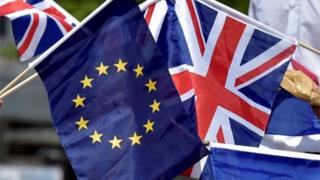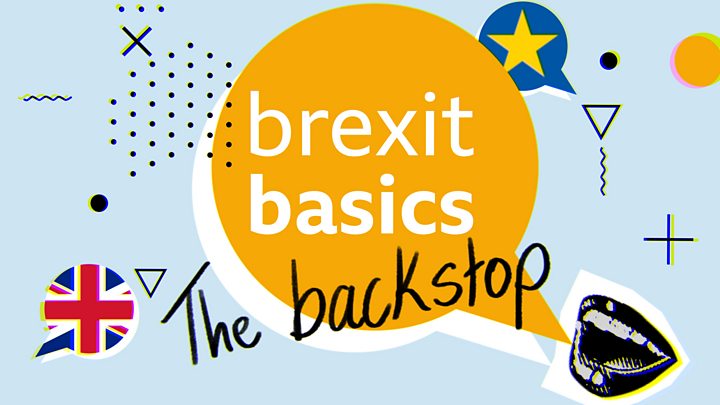 Image copyright
Reuters
Image copyright
Reuters
The prime minister has cancelled a visit to Dublin later due to a vote of no confidence she faces from her party.
Theresa May had been planning to discuss the Brexit negotiations with the taoiseach (Irish prime minister) on Wednesday night.
She has said she will now remain in London, but that progress on the Irish border backstop has been made in recent days.
On Monday, she cancelled a vote on her plan to get assurances on the backstop.
Mrs May has been holding talks with other EU leaders who say the deal cannot be renegotiated.
She was due to meet Taoiseach Leo Varadkar in Dublin at 18:30 local time but, speaking outside Downing Street, said she would stay in London to fight the leadership challenge.
Mr Varadkar has said the Irish government "will not compromise" on its commitments around the border.
The prime minister is still expected to meet DUP leader Arlene Foster after Prime Minister's Questions on Wednesday afternoon, a DUP spokesperson said.
'Backstop needs radical surgery'
The UK is due to leave the EU on 29 March 2019.
The backstop is the insurance policy arrangement aimed at avoiding the return of a hard border - physical checkpoints or infrastructure - along the 310-mile (500-km) border between Northern Ireland and the Republic of Ireland after Brexit.
The Irish government has said there can be no deal without it, and has received support from other EU leaders.
The proposal, however, has faced a backlash from Labour and other opposition parties, and the DUP - which backs the government in a confidence-and-supply pact - but says it will not back the deal unless there is "radical surgery" to amend its terms.

On Tuesday, Arlene Foster said her party was not seeking a total "rewrite" of the withdrawal deal, but that the backstop needed to be removed from the binding legal text.
If it took effect, it would see only Northern Ireland remain aligned with the EU single market in some areas, meaning new regulatory barriers between GB and NI.
The UK would also not be able to leave the backstop without EU agreement.
Mrs May is understood to be seeking legal guarantees that the UK will not be trapped in the Northern Ireland backstop plan indefinitely.
What is the Irish government's view?
On Tuesday, Mr Varadkar said he will work to give the UK "assurances", but never compromise on his government's commitments around the border.
He said the Irish government also needed to up its contingency planning for a no-deal scenario in terms of recruitment of customs, veterinary and health officers at Irish ports.
"It means putting in place infrastructure at our ports and airports, in Dublin and Rosslare," he told opposition parties in the Irish parliament (Dáil Éireann).
"Firms who don't have action plans should develop action plans, and those who have action plans should begin to implement them."
The UK could still withdraw the threat of no deal by revoking Article 50 or extending it, he added.
What is the EU saying?
In Brussels, European Commission President Jean-Claude Juncker said there was "no room whatsoever" for renegotiation of the deal.
He told the European Parliament the EU could give further clarification but that the withdrawal agreement, in all its parts including the backstop, would not be reopened.
Mr Juncker said the backstop was "necessary" for the entire coherence of the agreement and it was necessary for the Republic of Ireland.
"Ireland will never be left alone," he added.
What happens next?
The prime minister is due to address her MPs at 17:00 GMT on Wednesday evening, ahead of the no-confidence vote.
It is not yet known how quickly the result of the secret ballot will be announced, but Mrs May needs to get a majority in her favour to win it.
If that happens she cannot be challenged for at least another year.
If Mrs May does not win the vote there would then be a Conservative leadership contest in which she could not stand.
A summit of EU leaders is still due to take place this Thursday.
Downing Street has said a Commons vote will be held on the deal at some stage before 21 January.